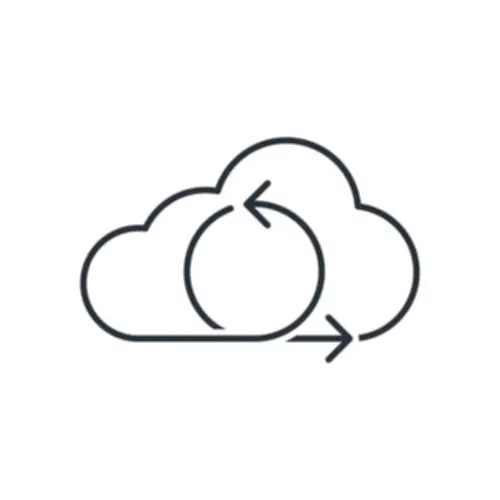Distributed computing systems recruit multiple machines that work in parallel, multiplying processing potential. This methodology what is distributed computing? of load balancing results in sooner computational pace, low latency, high bandwidths and maximal resource use of underlying hardware. Workers in specific areas of finance are already using distributed computing methods. Take danger administration, by which financial establishments want huge realms of data to execute big calculations to better inform decision-making about chance and danger assessments. Distributed computing ensures computational masses are shared evenly across multiple systems.
Pros And Cons Of Distributed Systems

Resources could be dispersed and moved all through the system but processes want to find a way to find them on demand. Access to assets must subsequently be facilitated by naming schemes and help providers which permit for resources to be found automatically. The capability to attain high efficiency (because the computation workload can be unfold throughout multiple processing entities). Several research teams are still engaged on self-healing methods and coverage administration systems that may handle subtle service stage agreements to enable higher automated determination making. We have seen some good success with many products now also specializing in simple manageability as one of the important objectives. While the sphere of parallel algorithms has a special focus than the field of distributed algorithms, there’s a lot interplay between the 2 fields.
Synthetic Intelligence And Machine Studying

Distributed system architectures are additionally shaping many areas of business and providing numerous providers with ample computing and processing power. In the following, we will clarify how this technique works and introduce the system architectures used and its areas of utility. The model is what helps it obtain nice concurrency somewhat merely — the processes are unfold throughout the out there cores of the system running them. Since that is indistinguishable from a community setting (apart from the flexibility to drop messages), Erlang’s VM can hook up with other Erlang VMs running in the same information heart or even in another continent. This swarm of virtual machines run one single utility and deal with machine failures by way of takeover (another node will get scheduled to run). Distributed computing is the important thing to the influx of Big Data processing we’ve seen in latest years.
See Further Guides On Key Software Program Development Topics
Each time period contains distinctive data that you would not find wherever else on the internet. That is why individuals around the globe continue to come back to DevX for schooling and insights. The DevX Technology Glossary is reviewed by know-how consultants and writers from our neighborhood. Terms and definitions continue to go beneath updates to stay related and up-to-date. Our reviewers have a powerful technical background in software growth, engineering, and startup companies.
In several cases, we identified the client/server mannequin because the underlying reference model for the interplay. This, in its strictest type, represents a point-to-point communication model allowing a many-to-one interaction pattern. Variations of the client/server mannequin allow for different interplay patterns. This class of architectural type fashions systems in terms of independent parts which have their very own life cycles, which interact with each other to perform their activities. There are two major classes inside this class—communicating processes and event systems—which differentiate in the best way the interaction among parts is managed. Before we discuss the architectural types intimately, it is necessary to build an appropriate vocabulary on the topic.
It is a system where multiple computer systems, usually geographically dispersed, collaborate to unravel an issue that’s past their particular person computing capabilities. Each system, or ‘node’, is self-sufficient, that means it operates independently whereas also contributing to the general aim. Distributed computing entails the coordination of tasks across multiple interconnected nodes, whereas cloud computing acts more as an on-demand service to a node that pulls info from a centralized, shared pool of resources.
Bear in thoughts that virtually all such numbers shown are outdated and are most probably significantly bigger as of the time you’re reading this. This signifies that most methods we will go over at present could be considered distributed centralized systems — and that is what they’re made to be. Decentralized continues to be distributed in the technical sense, but the entire decentralized systems is not owned by one actor. No one company can personal a decentralized system, otherwise it wouldn’t be decentralized anymore. A possible strategy to this is to define ranges based on some information about a record (e.g customers with name A-D).
HDFS is designed to handle giant knowledge sets reliably and efficiently and is highly fault-tolerant. It divides giant knowledge information into smaller blocks, distributing them throughout different nodes in a cluster. This permits for efficient information processing and retrieval, as tasks could be performed on multiple nodes simultaneously. By dividing a large task into smaller subtasks and processing them concurrently, the system can significantly reduce the time required to complete the duty.
Examples of distributed object infrastructures are Common Object Request Broker Architecture (CORBA), Component Object Model (COM, DCOM, and COM+), Java Remote Method Invocation (RMI), and .NET Remoting. The most related example of peer-to-peer systems [87] is constituted by file-sharing applications similar to Gnutella, BitTorrent, and Kazaa. To tackle an incredibly massive number of friends, different architectures have been designed that divert slightly from the peer-to-peer mannequin. For instance, in Kazaa not all the peers have the same role, and some of them are used to group the accessibility info of a group of friends. Another attention-grabbing example of peer-to-peer architecture is represented by the Skype community. In the earlier section, we mentioned techniques and architectures that allow introduction of parallelism inside a single machine or system and the way parallelism operates at completely different ranges of the computing stack.

As phone networks have developed to VOIP (voice over IP), it continues to grow in complexity as a distributed network. The web search example lined beforehand is a perfect example of scaling out, additionally known as horizontal scaling. Here, as the task’s requirements increase, as an alternative of creating the machines more powerful, we merely add more machines.

With sharding you cut up your server into multiple smaller servers, referred to as shards. These shards all hold different information — you create a rule as to what sort of data go into which shard. It is very important to create the rule such that the information gets spread in an uniform way. Low Latency — The time for a network packet to travel the world is physically bounded by the pace of sunshine. For example, the shortest potential time for a request‘s round-trip time (that is, go back and forth) in a fiber-optic cable between New York to Sydney is 160ms.
However, distributed computing can involve numerous types of architectures and nodes, while grid computing has a common, defined architecture consisting of nodes with a minimum of four layers. Additionally, all nodes in a grid computing network use the identical network protocol so as to act in unison as a supercomputer. Distributed computing is when multiple interconnected laptop methods or gadgets work collectively as one.
Messages from the client are added to a server queue, and the consumer can continue to perform other features until the server responds to its message. Instead, they make requests to the servers, which handle a lot of the information and different sources. You can make requests to the shopper, and it communicates with the server in your behalf. For example, distributed computing can encrypt massive volumes of data; remedy physics and chemical equations with many variables; and render high-quality, three-dimensional video animation. Distributed techniques, distributed programming, and distributed algorithms are another terms that each one refer to distributed computing. The capability to grow as the scale of the workload will increase is an essential function of distributed techniques, completed by adding further processing units or nodes to the network as wanted.
Fault tolerance is a corrective course of that enables an OS to respond and correct a failure in software or hardware whereas the system continues to operate. Fault tolerance has come for use as a general measure of ongoing business viability in the face of a disrupting failure. The functional requirements are application-specific and may relate to behavior or outcomes similar to sequencing of actions, computational outputs, control actions, security restrictions, and so forth.
- NameNodes are liable for preserving metadata about the cluster, like which node contains which file blocks.
- For intermachine communications, this hardware can use SNA or TCP/IPon Ethernet or Token Ring.
- This was an improve to the BitTorrent protocol that didn’t depend on centralized trackers for gathering metadata and finding friends but instead use new algorithms.
- The purpose BitTorrent is so well-liked is that it was the first of its kind to provide incentives for contributing to the community.
By dividing server responsibility, three-tier distributed methods reduce communication bottlenecks and improve distributed computing efficiency. Distributed systems are well-positioned to dominate computing as we all know it for the foreseeable future, and virtually any kind of application or service will incorporate some type of distributed computing. The need for always-on, available-anywhere computing isn’t disappearing anytime soon. The most typical types of distributed systems today operate over the web, handing off workloads to dozens of cloud-based digital server cases which would possibly be created as needed, and then terminated when the task is full. Sending all device-generated knowledge to a centralized data middle or to the cloud causes bandwidth and latency points. Edge computing presents a more efficient alternative; knowledge is processed and analyzed closer to the purpose the place it’s created.
Transform Your Business With AI Software Development Solutions https://www.globalcloudteam.com/